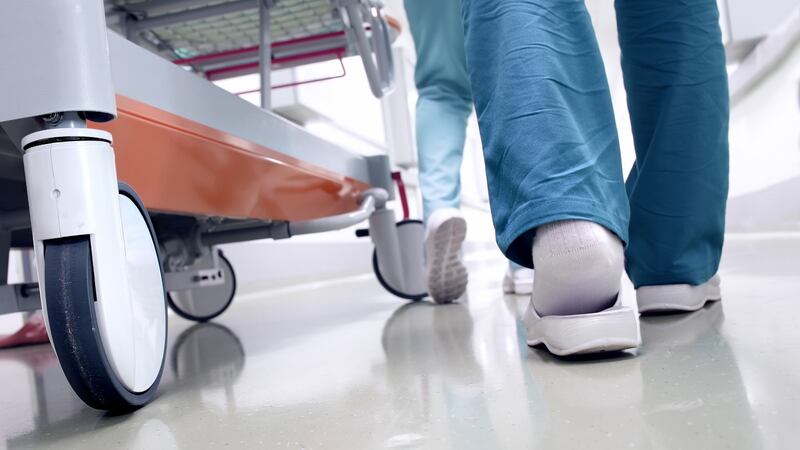The headline announcement of additional funding in the Health Service Executive’s (HSE) national plan for 2020 may hint at better times ahead, but recent events at the coalface suggest it is no more than a sticking plaster for a deeper malaise.
An early influenza season has resulted in a spike in attendances and even more pressure on already uncontrolled emergency department waiting times. A chronic lack of beds in the Central Mental Hospital means that a brain damaged homeless man of unsound mind spent more than a year on remand in Mountjoy. And the cancellation of cancer chemotherapy treatment sessions in Crumlin Children’s Hospital marks a new low in HSE performance. Significantly at the national plan launch, HSE chief executive Paul Reid said that the organisation is not delivering the kind of service the public expects and the HSE aspire to.
All of which might make a call for a cap on health service funding at its current level of €17.4 billion seem a little odd. But perennial funding top ups in the health budget have made a mockery of Department of Health budget estimates. With worsening access and no discernible improvement in patients’ experiences, it really has become a case of throwing good money after bad.

Perhaps the most egregious example of how dysfunctional the HSE remains some 15 years after it was established occurs at the interface between hospital and the community care.
Many unplanned admissions to hospital involve older people and those with multiple diseases. Most will be fit for discharge after a period of active treatment; however many of these patients require some level of community support to bridge from the care they need in hospital to a position where they regain an element of independence at home.
Nurses and therapists in acute hospitals must spend a significant amount of time sourcing and filling in forms
This involves a referral from hospital nurses, occupational therapists and physiotherapists to their colleagues working in the community. One would have thought a uniform referral process with a common application form would be in place nationally to ensure speed of referral and geographic equity. Incredibly, this is not the case. In many instances the layout and information required on these forms varies not just regionally but often from county to county. Nor has the HSE put in place a facility to complete the forms online. As a result, the nurses and therapists in acute hospitals must spend a significant amount of time sourcing and manually filling in a variety of forms. At the receiving end in the community, public health nurses and therapists must negotiate different systems, often county by county, with which to process the requests.
One such form, the Common Summary Assessment Report (CSAR) is required when applying for a home care package for home help support. This detailed 4 page form has to be signed and dated a minimum of 12 times. To further complicate the process, in some areas the first 10 hours of home help must be applied for using a different form. If more than 10 hours care is required then the CSAR must also be completed.
The process for referral for essential equipment (profiling beds, pressure mattresses, wheelchairs etc) to facilitate discharge home also varies from county to county. While in some areas the referral must go to the public health nurse, in others it is the remit of the community occupational therapist. Yet again, different systems and forms are utilised.
Meanwhile, the patient remains in hospital and is labelled a delayed discharge. They wish to go home – but because the HSE is still operating a disjointed Dickensian system, the discharge cannot be processed efficiently. This in turn leads to a shortage of acute beds for the next wave of urgent admissions and a continuation of inordinate and even dangerous waiting times in hospital emergency departments.
This fundamental problem will not be improved by the additional €50 million announced in the National Service Plan. It requires a uniform, single channel process managed by one central office. Firstly, this will ensure the end of current post-code inequalities for patients. Furthermore, it will require far fewer staff to manage a well-oiled IT system. Queries and clarifications will be managed electronically at both ends of the system.
We simply cannot give additional funding to the monolithic HSE
And while the change will require some seed funding, it offers real budgetary savings: the streamlined process will require less administrative staff to manage, leading to a concrete opportunity to offer voluntary redundancy to certain employees. Indeed, it would seem only fair that the cohort of senior managers who have continuously failed to modernise the process be offered a similar opportunity to retire early.
Savings like this are available throughout a heavily bureaucratic public health service. Realising these opportunities will free up money for frontline services, while remaining within the €17.4 billion budget envelope.

We simply cannot give additional funding to the monolithic HSE. With serial overruns requiring annual top ups to its already massive budget, to do so will simply invite taxpayer revolt, while further weakening the integrity of Government finances.
If there is an opportunity to put more than €17.4 billion into our health system, let’s look at directly funding more hospital beds. And let’s offer it to Slaintecare for specific change projects, in line with its overarching aim; to provide healthcare on the basis of need and not on ability to pay. With about 8 years of its remit remaining, Slaintecare -targeted funding is an investment in a revamped health service.
Which is in stark contrast to increasing the HSE’s budget while expecting any meaningful improvement for patients and health professionals. It’s time we called a halt to this health service charade.
Dr Muiris Houston is The Irish Times health analyst










